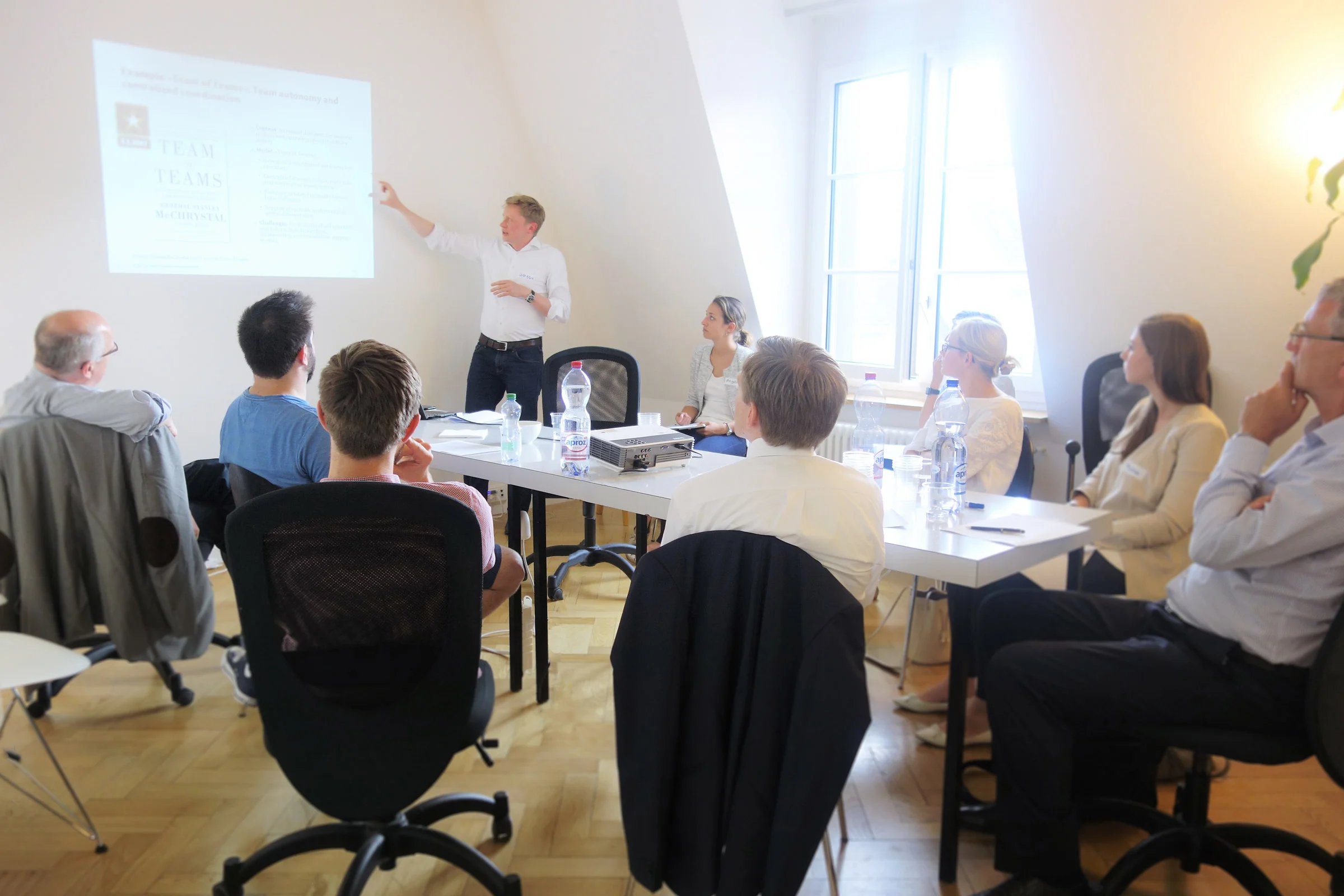When we put up the announcement for our first Open Workspace on the topic of “Agile Organizing” we didn’t expect to bring together such a diverse and highly engaged group of practitioners from different industries such as media, financial services, education, manufacturing, e-commerce, and the non-profit sector. Our initial input with some key propositions from our agile organizing development work and a range of agile case studies was followed by a lively debate on how to build agile organizations.
In this short retrospective, we’d like to share some points brought up in the discussion. Agile organizing is yet an emerging practice with many open questions – and one of the crucial ones is probably how to scale agile practices beyond the team level. In this sense, the points below do not provide definitive answers but hint at some frontiers of agile organizing – calling for continued management innovation and action learning by both practitioners and facilitators.
1. Organizational agility is valid for every organization – and yet context still matters
The objectives of agile organizing are universally valid, however, the nature and context of value creation matter a lot in approaching organizational agility. There is a huge difference whether you give task autonomy to the smallest unit at an assembly line; whether you seek to bust organizational silos allowing for task-focused collaboration in a “team of teams” (as described by Stanley McChrystal for the U.S. Army’s counterinsurgency operations in the Iraq war); or whether you seek to integrate digital capabilities with your business functions. Interestingly, those and other cases can be used to explore parallel logics and organizational solutions which allows to identify common denominators (which is really an important part of what we are currently working on …).
2. How to develop the agile org design toolbox?
Scaling agile on the organizational level is a matter of smart org design. The key elements of building organizational structures are relevant – but they need to be differentiated and smartened up to allow for agility in a structural dimension. Take roles and manager roles in particular. The classic org chart (even in its two-dimensional matrix version) calls for a fully integrated leader-manager role that acts as the key joint connecting units, functions, and layers. Prime examples of agile organizing take this integrated role apart and differentiate it into different dimensions. For example, in Holacracy there is the differentiation between rep link, lead link, facilitator, secretary; or in Spotify’s tribes and squads, there is the task owner, chapter lead, tribe lead, and agile coach – each with formally distinct remits and accountabilities. Such a differentiation of leadership roles, if set up in the right way, allows teams to self-direct their focus on value creation without being slowed down by constant coordination and alignment on higher levels of the integrated management hierarchy.
3. Full top management commitment
Nobody whom we have ever met would argue against the ultimate goals and objectives of agile organizing, namely increasing adaptability, entrepreneurial energy, speed and employee engagement. However, the requirements to make this happen will be much more controversial. The most important requirement is the need to endorse and allow for significant team autonomy and self-organization – because that results in a loss of managerial control in classically structured organizations. Accordingly, a meaningful agile transformation needs substantial top management support, which is based on a shared systemic understanding of the organization’s purpose and how it creates value.
4. Legitimacy is key
The more fundamental the change, the more important it is to have a burning platform – for example over-the-top competition or disruptive market threats. Other mechanisms to support the case are the existence of proven models, approaches and examples. On the other hand, legitimacy is supported by localized, DIY management innovation: for example when organizations define their ‘way of agile’ and the according semantics themselves. By doing so they can avoid the not-invented-here-syndrome (NIH) which probably is as relevant for management innovations as it is for other domains of applied novelty production.
We will continue to have regular open workspace sessions on topics from our development agenda. To stay up to date subscribe to our newsletter here.
Join us in our agile journey
As we are building our collection of frameworks, workshop formats, and tools we continue to look for co-creation partners who are interested in working with us and using our materials and prototypes. Use cases in practice would be, for example:
-
You want to know what agile organizing is, how it works and understand the implications for your organization
-
You already have an agile project or pilot and wonder how to scale this approach for wider parts of the whole organization
-
You are seeking a framework and approach to think through agile goals, designs, and the transformation journey
If you have a case at hand or know someone who might be interested, check out our Agile Organizing Kit.



